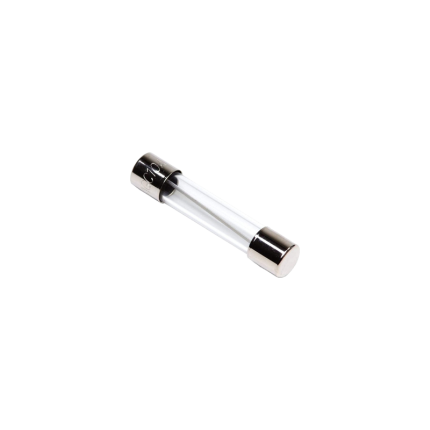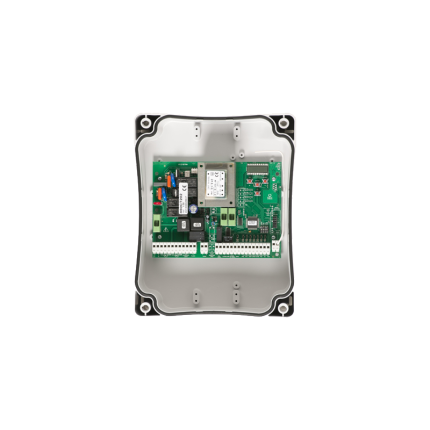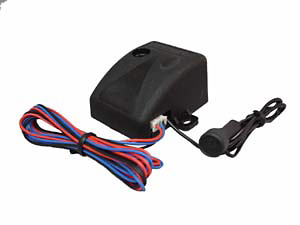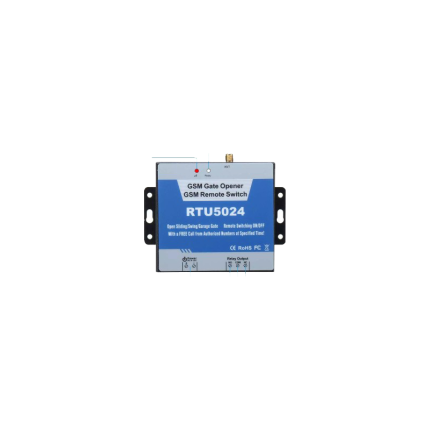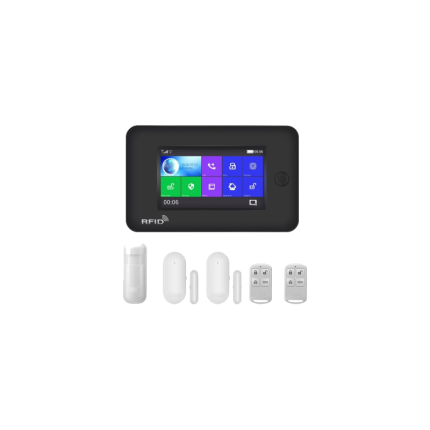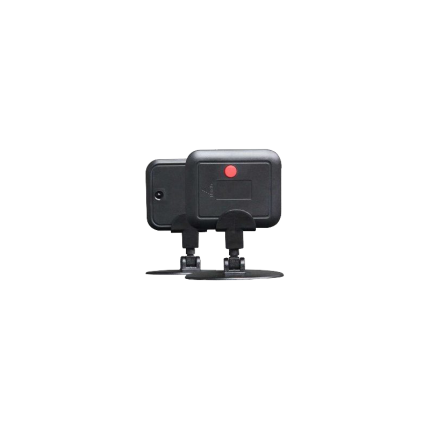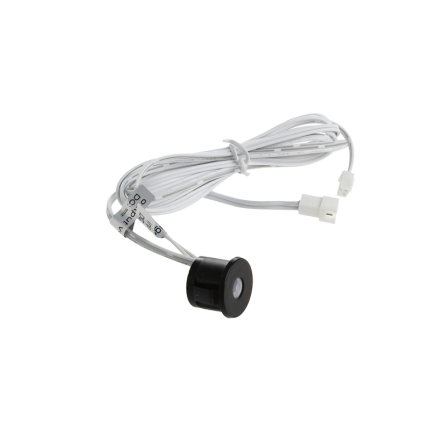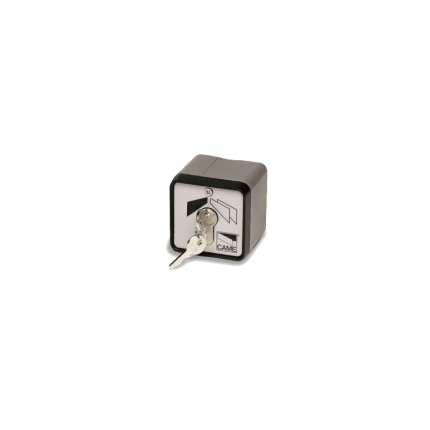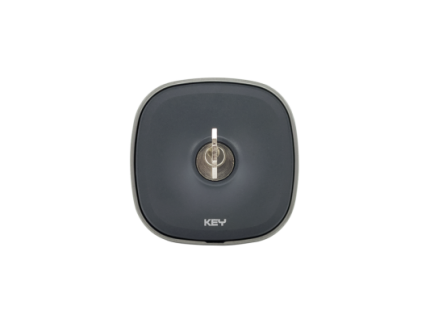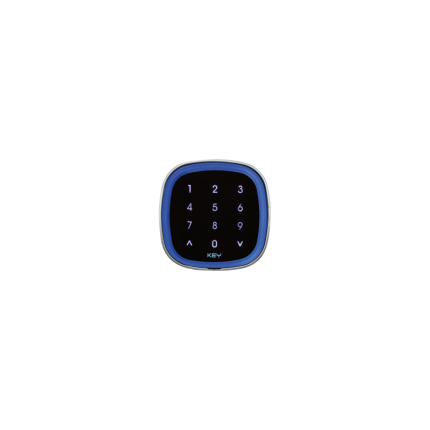Shop
Gate operator control board fuse
Ship or pick up from our office.
Gate operator control board fuse
A gate operator control board fuse is a critical safety component found on the circuit board of an automatic gate system. Its primary function is to protect the electrical components of the gate operator from damage caused by excessive current, such as a short circuit or an overload. Essentially, it acts as a sacrificial link in the electrical circuit. If the current flowing through the circuit exceeds a predetermined safe limit, the thin metal wire or strip inside the fuse melts and breaks the circuit. This prevents the surge of electricity from reaching and damaging more expensive and vital components on the control board or in the motor. Types and Characteristics Gate operator control board fuses come in various amperage ratings, typically ranging from 0.2 to 15 amps, depending on the specific gate operator model and its power requirements. Some common characteristics include:- Slow-Blow/Time-Delay Fuses: Many gate operators use "slow-blow" or "time-delay" fuses. These fuses are designed to tolerate brief, temporary current surges that often occur when motors start up without immediately blowing. They only interrupt the circuit if the overload persists for a longer duration.
- Physical Form: They can be found in various physical forms, including glass tube fuses (common in older models), blade-style automotive fuses, or sometimes as surface-mount fuses directly on the printed circuit board.
- Short Circuit: A direct path for current to flow, bypassing the normal resistance, causing a sudden and large surge.
- Overload: The gate motor or another component drawing more current than it's designed for, perhaps due to mechanical obstruction, a faulty motor, or issues with the gate's movement (e.g., binding hinges, gate dragging on the ground).
- Component Failure: A faulty component on the control board or within the gate operator system itself can cause an abnormal current draw, leading the fuse to blow.
- Power Surges: External power surges from the main electrical supply or lightning strikes can also cause fuses to blow.
- Disconnect Power: Always disconnect all power to the gate operator before attempting any inspection or repair. This includes both AC power and any battery backup systems.
- Locate the Fuse: The fuse is typically located directly on the main control board, often in a small holder or a clear cover. Refer to your gate operator's manual for its exact location.
- Inspect the Fuse:
- For glass tube fuses, you can often visually inspect the wire inside; if it's broken or discolored, the fuse is blown.
- For blade-style fuses, there might be a visible break in the metal strip, or you can use a multimeter set to continuity mode. A blown fuse will show no continuity.
- Replace the Fuse: If the fuse is blown, replace it with a new fuse of the exact same amperage (ampere) and voltage rating. Using a fuse with a higher rating can lead to damage to the control board or other components, as it won't blow when it should. Using a lower rating may cause the fuse to blow unnecessarily.
Gate operator main control board – Key Automation
Ship or pick up from our office.
Gate operator main control board – Key Automation
A swing gate operator's main control board is the "brain" of the system, responsible for managing all the functions of the gate opener.
It receives signals from various input devices like remote controls, keypads, and safety sensors, and then directs the gate motor to open or close the gate accordingly. The control board also manages other aspects of the gate operation, such as adjusting speed, setting timers, and implementing safety features.
Here's a more detailed breakdown:
-
Central Control:The control board acts as the central hub for all gate operations.
-
Signal Processing:It receives signals from different devices (remote, keypad, safety sensors).
-
Motor Activation:Based on the received signal, the control board sends instructions to the motor to open or close the gate.
-
Adjustable Settings:Many control boards allow for adjustments to gate speed, opening/closing times, and safety settings.
-
Safety Features:Some control boards manage security features like locking mechanisms and safety protocols.
-
Power Supply:The control board is usually powered by a specific voltage (e.g., 120 volts) and may have an output voltage for powering other accessories.
-
Internal Receiver:Some control boards have built-in radio receivers for remote control operation.
Gate Rubber Stopper A1
Ship or pick up from our office.
Gate Rubber Stopper A1
Types of Rubber Stoppers:
- Fixed rubber stoppers: Permanently installed, often used for heavier gates.
- Adjustable rubber stoppers: Allow for customization of the gate's swing position.
- Spring-loaded rubber stoppers: Combine a spring mechanism with the rubber for enhanced shock absorption and noise reduction.
- Floor-mounted rubber stoppers: Attached to the floor to stop the gate's movement.
Where they are used:
-
Swing gates:Commonly used to prevent swing gates from hitting walls, posts, or other structures.
-
Sliding gates:Used to stop the gate at the end of its track, preventing it from rolling off.
-
Industrial gates:Used in various industrial settings for gates that experience frequent and forceful use.
-
Residential gates:Used in homes to protect gates, walls, and prevent accidents.
Glass Break Sensor
GSM Gate Controller RTU5024
Ship or pick up from our office.
GSM Gate Controller RTU5024
The GSM Gate Controller RTU5024 is a device that allows you to control gates, doors, and other electrical equipment remotely using a mobile phone. It functions as a GSM relay switch, meaning it utilizes the Global System for Mobile Communications (GSM) network to receive commands and activate a built-in relay. How it Works ⚙️ The RTU5024 operates by accepting calls from authorized phone numbers. When an authorized user dials the SIM card number installed in the RTU5024, the device recognizes the caller ID, rejects the call (so there are no call charges), and then activates its relay. This relay can be connected to the mechanism of a gate, door, or other machinery, effectively opening, closing, or switching it on/off. Users can also manage the device and its authorized numbers via SMS commands or a dedicated smartphone app. Key Features ✨- No Call Charges: The device rejects calls from authorized numbers after the first ring, meaning there are no charges incurred for operating it via phone call.
- Caller ID Authentication: It uses caller ID for identification, ensuring only authorized numbers can control the device. Unknown callers are ignored.
- Remote Operation: Can be operated from anywhere with GSM network coverage, with no distance limitations.
- User Management: Authorized phone numbers (typically up to 200, though some versions support more) can be added or removed via SMS text commands or through a smartphone app.
- Relay Output: Features one output with a relay rating (e.g., 3A/240VAC) for connecting to various switches or machines.
- SMS Confirmation: The device can be configured to send an SMS confirmation to the owner or authorized number after a relay action.
- Programmable Relay Time: The duration for which the relay remains open or closed is often programmable.
- Quad-band GSM: Works on universal GSM frequencies (850/900/1800/1900MHz), making it compatible with most GSM networks worldwide. Some versions also support 3G or 4G.
- Smartphone App: Available with companion apps for Android and iOS for easier configuration and control.
- No Physical Remote Needed: Eliminates the need for multiple physical remote controls or keys for different users.
- Access Control: Remotely opening/closing swing/sliding gates, garage doors, shutters, and pedestrian doors for residential, commercial, or industrial properties.
- Car Parking Systems: Controlling barriers and access for parking lots.
- Remote Equipment Control: Switching on/off various remote equipment like street lights, motors, pumps, fans, inverters, PLCs, and air conditioners.
- Agriculture: Remote control of agricultural pumps and irrigation systems.
- Business: Managing electronic boxes, billboards, and LED signs remotely.
- Security: Can be integrated into basic security systems for remote monitoring or activation of alarms.
Home Alarm System – WIFI SX1
Ship or pick up from our office.
Home Alarm System - WIFI SX1
Included: *Wireless/Wired Zones *WiFi network, support APP push/SMS/Voice, such as different alarm channels *Multi-language menu, Touch screen display *2 x ON/Off Remote control *2 x Wireless magnetic sensor *1 x Wireless PIR Infrared Sensor The "Home Alarm System - WIFI SX1" appears to refer to a specific type of DIY-friendly, wireless home security system that leverages both Wi-Fi and 4G connectivity for enhanced reliability. While specific manufacturers might produce variations, the general characteristics of an SX1 system include: Key Features and Functionality:- Wireless and DIY Installation: Designed for easy setup without complex wiring or professional installation, often using double-sided adhesive tape for sensors.
- Wi-Fi and 4G Connectivity: This is a core feature, allowing remote monitoring and control via a smartphone app (e.g., SmartHome Security app, Nexxt Home app, X-Sense Home Security app, or generic Tuya Smart/Smart Life app). The 4G acts as a backup in case of Wi-Fi outages, ensuring continuous protection.
- Battery Backup: A built-in lithium battery (often 3.7V/900mA, providing about 12 hours of backup) ensures the system remains operational during power failures.
- Expandability: These systems are typically expandable, allowing users to add numerous sensors (e.g., up to 50 or 99 sensors and 10 remote controls) to cover various areas of their home or office.
- Variety of Sensors: Common sensors include:
- Door/window contact sensors
- Motion detectors (often pet-immune)
- Smoke and carbon monoxide detectors
- Flood sensors
- Glass break sensors
- Loud Siren: An integrated siren (often around 110-120dB) sounds to alert occupants and deter intruders.
- Real-time Notifications: Users receive instant alerts to their smartphones via the app when an alarm is triggered, a sensor detects activity, or there's a low battery or power loss.
- Customization: The ability to name sensors and remote controls for easier identification.
- Smart Home Integration: Many SX1 systems are compatible with popular smart home platforms like Amazon Alexa, Google Home, and IFTTT, allowing for voice control and integration into broader home automation routines.
- Auto-dialing and SMS Alerts: The system can often be configured to automatically dial pre-programmed numbers and send SMS alerts in case of an alarm.
- Professional Monitoring (Optional): While often a DIY system, some providers or versions might offer optional professional monitoring services for 24/7 security team response.
- Affordability: Often seen as a cost-effective security solution, especially with no mandatory monthly fees (though professional monitoring may incur fees).
- Ease of Use: User-friendly mobile apps and straightforward installation.
- Flexibility: Easily expandable and adaptable to various home or office sizes and security needs.
- Peace of Mind: Home alarm system - WIFI SX1, provides continuous monitoring and alerts, even when away from home.
- Setup Challenges: Some users have reported initial setup difficulties due to unclear instructions or issues with sensor reliability.
- Sensor Reliability: Occasional reports of inconsistent sensor performance or false alarms.
- Wi-Fi Dependency: While 4G provides backup, a stable 2.4 GHz Wi-Fi network is typically required for initial setup and full functionality.
- App Performance: While generally praised, some apps can have occasional freezing or delayed alert issues.
Infrared Card
Ship or pick up from our office.
Infrared Card
An Infrared Card, also known as an infrared detection card or laser viewing card, is a tool used to visualize infrared light, typically from lasers or other sources, by converting it into a visible light display. It's a simple, low-cost way to check for the presence and position of infrared beams, making it useful for alignment, safety, and diagnostic purposes.
Here's a more detailed explanation:
What it does:
-
Converts invisible IR light to visible light:The card contains a material, often phosphorescent, that absorbs infrared radiation and then emits visible light when stimulated.
-
Indicates presence and location:The illuminated spot on the card shows where the infrared beam is hitting, making it easy to see the beam's path and focal point.
-
Used for various applications:Infrared cards are used for aligning lasers, checking for infrared light leakage, visualizing infrared beams from various sources, and ensuring safety by detecting potentially harmful IR radiation.
Infrared PIR Motion Sensor Switch
Ship or pick up from our office.
Infrared PIR Motion Sensor Switch
An Infrared PIR Motion Sensor Switch is an electronic device that detects movement by sensing changes in infrared (IR) radiation in its field of view. "PIR" stands for Passive Infrared, meaning it doesn't emit any energy itself but rather passively monitors the infrared radiation given off by objects. 🌡️ How it Works At the core of a PIR sensor is a pyroelectric sensor, which is sensitive to heat (infrared radiation). Most PIR sensors have two halves, or "slots," wired in a differential arrangement. Here's a simplified breakdown of its operation:- Idle State: When there's no movement, both halves of the sensor detect the same amount of ambient infrared radiation from the surroundings.
- Motion Detection: When a warm object, like a human or animal, moves into the sensor's field of view, it first intercepts one half of the sensor, creating a temporary difference in the infrared radiation detected by the two halves. This difference generates a voltage pulse.
- Signal Processing: The sensor's circuitry processes this voltage pulse. If the change is significant and matches the pattern of a moving heat source, the sensor triggers an output signal.
- Fresnel Lens: A key component of a PIR sensor is the Fresnel lens . This specially designed plastic lens focuses infrared radiation from different angles onto the pyroelectric sensor, effectively dividing the detection area into multiple sensitive zones. This allows the sensor to have a wider field of view and detect movement more effectively.
- Automatic Lighting Control: This is one of the most common applications. PIR sensors turn lights on when someone enters a room, hallway, or outdoor area and turn them off after a set period of no motion, saving energy.
- Security Systems: They are integral to security alarms, detecting intruders and triggering alerts or security cameras.
- Smart Home Systems: PIR sensors play a role in smart homes for automating various functions, from lighting and HVAC systems to controlling appliances based on occupancy.
- Automatic Doors: In public buildings, they detect approaching individuals to automatically open doors.
- Energy Management: By ensuring that lights, HVAC, and other devices only operate when an area is occupied, PIR sensors contribute significantly to energy savings in residential and commercial settings.
- Wildlife Tracking and Research: Researchers use them to monitor animal movements without disturbance.
Key selector
Ship or pick up from our office.
Key selector
A gate opener key selector is a device that allows you to manually open and close an automatic gate using a physical key, providing an alternative access method in case of power outages or remote control malfunctions. It essentially disengages the automated system, allowing for manual operation of the gate.Key selector -Key Automation EGS101
Ship or pick up from our office.
Key selector -Key Automation EGS101
The EGS101 is a gate/door opener key selector manufactured by KeyAutomation. It's designed for high-security residential and commercial properties and allows manual operation of automatic gates or doors using a physical key, according to KeyAutomation.A key selector for gates is a physical switch, often a key-operated switch, that allows manual operation of an automatic gate or door.
It's a security feature and backup system for situations where automated control is unavailable or undesirable.
TECHNICAL FEATURES
| Voltage | Vdc | Max 48 |
| Degree of protection | IP | 55 |
| Dimensions (L - D - H) | mm | 79 - 23 - 79 |
| Item | kg | 0,335 |
| Minimum operating temperature | °C | -20 |
| Max operating temperature | °C | +55 |
A key selector for door openers is a switch that allows you to operate an automated door or gate using a physical key, often as an alternative or backup to other access methods like remote controls or keypads.
These switches are commonly used in situations where you need to control access to a gate, garage door, or other automated barrier.
-
Function:Key selectors are designed to activate the door or gate opener's motor by completing an electrical circuit when the key is turned.
-
Mechanism:They typically involve a key cylinder that, when turned, activates a set of electrical contacts.
-
Applications:They are used in various settings, including residential, commercial, and industrial applications, such as garage doors, gates, and automatic doors.
-
Features:Some key selectors offer multiple functions, like automatic, lock, exit, and hold-open modes.
-
Types:They can be found as jamb key switches for garage doors or as more sophisticated selector switches for automatic doors with multiple functions.
Keypad – K180SC103
Ship or pick up from our office.
Keypad - K180SC103
*EM/ID card/tag reader *Shock resistance *Anti-vandal Metal shell *Backlight *1000 Users *DC 12 V *IP 67 *Doorbell *Rain Shield Cover includedKeypad access control -Key Automation EGKTB1
PRODUCT SHEET PDF
While a specific image of the EGKTB1 is not available in the search results, the description aligns with the typical features and functionality of a keypad used for access control. You can likely find images of similar keypads by searching for "Keypad Access Control" or "Keypad Security System".
Keypad access control -Key Automation EGKTB1
*BUS decoder powered *Rain Shield Cover Included *Touch *Protection degree: IP 55 *BacklightTECHNICAL FEATURES
| Duty cycle percentage | % | 100% |
| Voltage | Vac | 10-24 |
| Voltage | Vdc | 12-34 |
| AC Voltage Frequency | Hz | 50/60 |
| Nominal power | W | 0,25 |
| Peak power | W | 1,5 |
| Appliance isolation class | III | |
| Degree of protection | IP | 55 |
| Dimensions (L - D - H) | mm | 79 - 23 - 79 |
| Item | kg | 0,25 |
| Minimum operating temperature | °C | -10 |
| Max operating temperature | °C | +55 |
The Keypad Key Automation EGKTB1 is a keypad used for access control.
It's a type of electronic keypad that likely integrates with a security system to allow entry based on a code or combination.
Keypads like the EGKTB1 typically replace traditional keys and locks, providing a more secure and convenient way to manage access to a building or specific areas within a building.
Here's a more detailed explanation:
-
Access Control:The primary function of the EGKTB1 is to control access to a secured area.
-
Keypad Functionality:It allows users to enter a pre-set code using the keypad's buttons. This code is then verified by the connected security system.
-
Integration:It's designed to connect with a security system or control unit, often using a Wiegand protocol, to manage access permissions.
-
Security:Keypads offer a more secure alternative to traditional keys because they can be reprogrammed with new codes, and they eliminate the need to physically distribute keys.
-
Convenience:Keypads offer a convenient way to manage access, especially in situations where there are many users or frequent changes in access needs.

